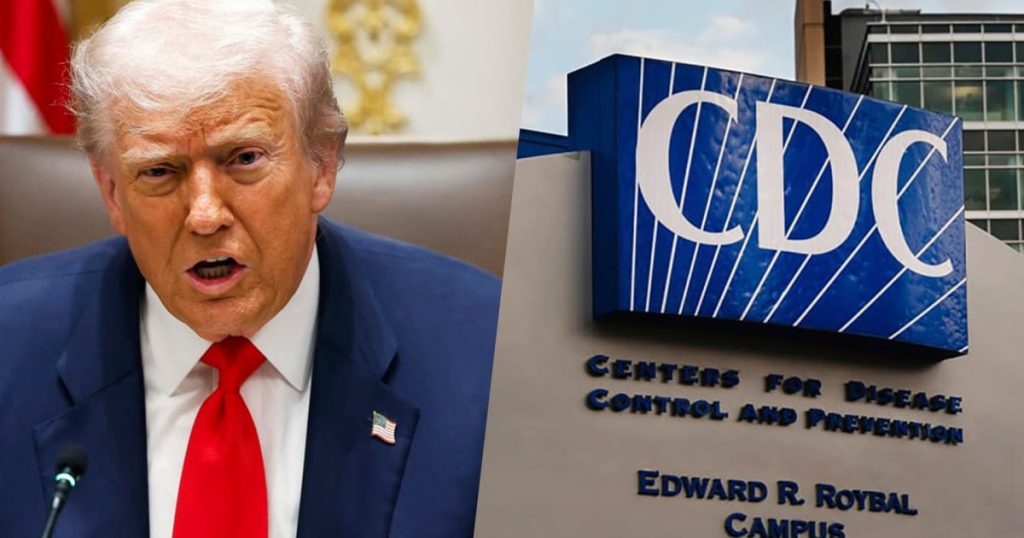Listen to the article
CDC Experts Warn of “Perfect Storm” as Government Shutdown Threatens Public Health Response
As the government shutdown enters its third week, public health officials are raising alarms about the severe impact on disease surveillance and emergency response capabilities across the United States. Former Centers for Disease Control and Prevention (CDC) officials warn that the combination of widespread layoffs, funding disruptions, and rampant misinformation has created a dangerous vulnerability in the nation’s health security infrastructure.
Dr. Demetre Daskalakis, former director of the National Center for Immunization and Respiratory Diseases at the CDC, described the current situation as “a perfect storm” that has left the country dangerously unprepared for potential disease outbreaks.
“We’re facing a triple threat,” Dr. Daskalakis explained. “The shutdown has severely reduced staffing at critical agencies, funding for essential programs has been cut off, and we’re battling an unprecedented wave of health misinformation that makes effective public health communication nearly impossible.”
The shutdown has forced furloughs of thousands of CDC employees, leaving only skeleton crews to handle routine disease surveillance and emergency response planning. According to agency insiders, approximately 65% of CDC staff have been designated as non-essential, creating critical gaps in areas including foodborne illness detection, infectious disease tracking, and emergency preparedness.
Dr. Debra Houry, who served as the CDC’s chief medical officer, emphasized that these disruptions couldn’t come at a worse time as the country approaches respiratory virus season.
“Fall and winter typically bring increased cases of influenza, respiratory syncytial virus, and other pathogens,” Dr. Houry noted. “Without proper surveillance systems actively monitoring these trends, we risk missing early warning signs of unusual outbreaks or emerging variants.”
The timing is particularly concerning given recent detection of novel influenza strains in several states and ongoing monitoring of global infectious disease threats, including newly identified coronavirus variants.
Beyond staffing issues, the shutdown has frozen grant payments to state and local health departments that rely on federal funding to maintain their own disease surveillance systems. This ripple effect means that even when the federal government reopens, there will be lasting damage to the nation’s decentralized public health infrastructure.
“These state and local health departments are the foundation of our public health system,” Dr. Daskalakis said. “When they’re weakened by funding disruptions, we lose our eyes and ears on the ground. That means delayed detection of outbreaks and slower response times.”
The current situation bears troubling similarities to previous government shutdowns that hampered public health responses. During the 2018-2019 shutdown, which lasted 35 days, the CDC was forced to scale back food safety inspections, resulting in several preventable foodborne illness outbreaks. Similar patterns are emerging in the current shutdown, with the FDA announcing reductions in routine food facility inspections.
The experts highlighted that these disruptions come against a backdrop of increasing public skepticism toward health agencies and rampant misinformation on social media platforms. This environment makes it exceptionally difficult to communicate health risks effectively when they do emerge.
“Public trust in health institutions has been systematically eroded over the past several years,” Dr. Houry said. “When we do identify threats, getting accurate information to the public becomes increasingly challenging in this polarized information landscape.”
Health security experts recommend that Americans take proactive steps to protect themselves during this period of reduced public health capacity, including staying current on vaccinations, practicing good hygiene, and consulting reliable sources for health information.
While certain “essential” CDC functions continue operating during the shutdown, including limited emergency response capabilities, experts warn that the full impact of these disruptions may not be apparent until after the government reopens and the true toll on public health infrastructure can be assessed.
“The shutdown isn’t just about delayed paychecks,” Dr. Daskalakis concluded. “It’s about dismantling systems that protect all Americans from health threats. These systems take years to build but can be damaged in just weeks of neglect.”
Fact Checker
Verify the accuracy of this article using The Disinformation Commission analysis and real-time sources.



